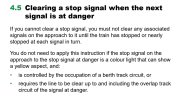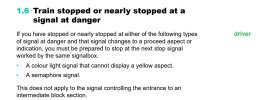Chrius56000
Member
- Joined
- 18 Aug 2010
- Messages
- 46
. . .What's the reason why old semaphore installations never had signal number–plates on brackets, gantries, signal–posts, etc?
. . .I have noticed where Semaphores remain and are still in use, N.R. is gradually adding identification plates to them, but look at any railway signalling book or photo album of traction, regions or a particular line or area, and you almost never see a semaphore with an identification plate!
. . .Contrast this with colour–light signals which have always had an identification plate since they were first used on the Marylebone/Amersham/Neasden main–line route in 1923! (The L.O.R. first used automatic colour–light signalling as early as 1921 but I don't think their signals had number plates!)
. . . Incidentally in otherwise semaphore AB areas I believe colour–light distants never originally had a number plate either, am I correct?
. . .I have noticed modernised AB lines such as Leicester–Manton–Peterborough where much original signalling has been modernised with LED single–lens aspect units, these do have number–plates but the fairly high speeds at which the Class 170 dmus pass them on this line means I can't read them!
Chris Williams
. . .I have noticed where Semaphores remain and are still in use, N.R. is gradually adding identification plates to them, but look at any railway signalling book or photo album of traction, regions or a particular line or area, and you almost never see a semaphore with an identification plate!
. . .Contrast this with colour–light signals which have always had an identification plate since they were first used on the Marylebone/Amersham/Neasden main–line route in 1923! (The L.O.R. first used automatic colour–light signalling as early as 1921 but I don't think their signals had number plates!)
. . . Incidentally in otherwise semaphore AB areas I believe colour–light distants never originally had a number plate either, am I correct?
. . .I have noticed modernised AB lines such as Leicester–Manton–Peterborough where much original signalling has been modernised with LED single–lens aspect units, these do have number–plates but the fairly high speeds at which the Class 170 dmus pass them on this line means I can't read them!
Chris Williams
Last edited:


